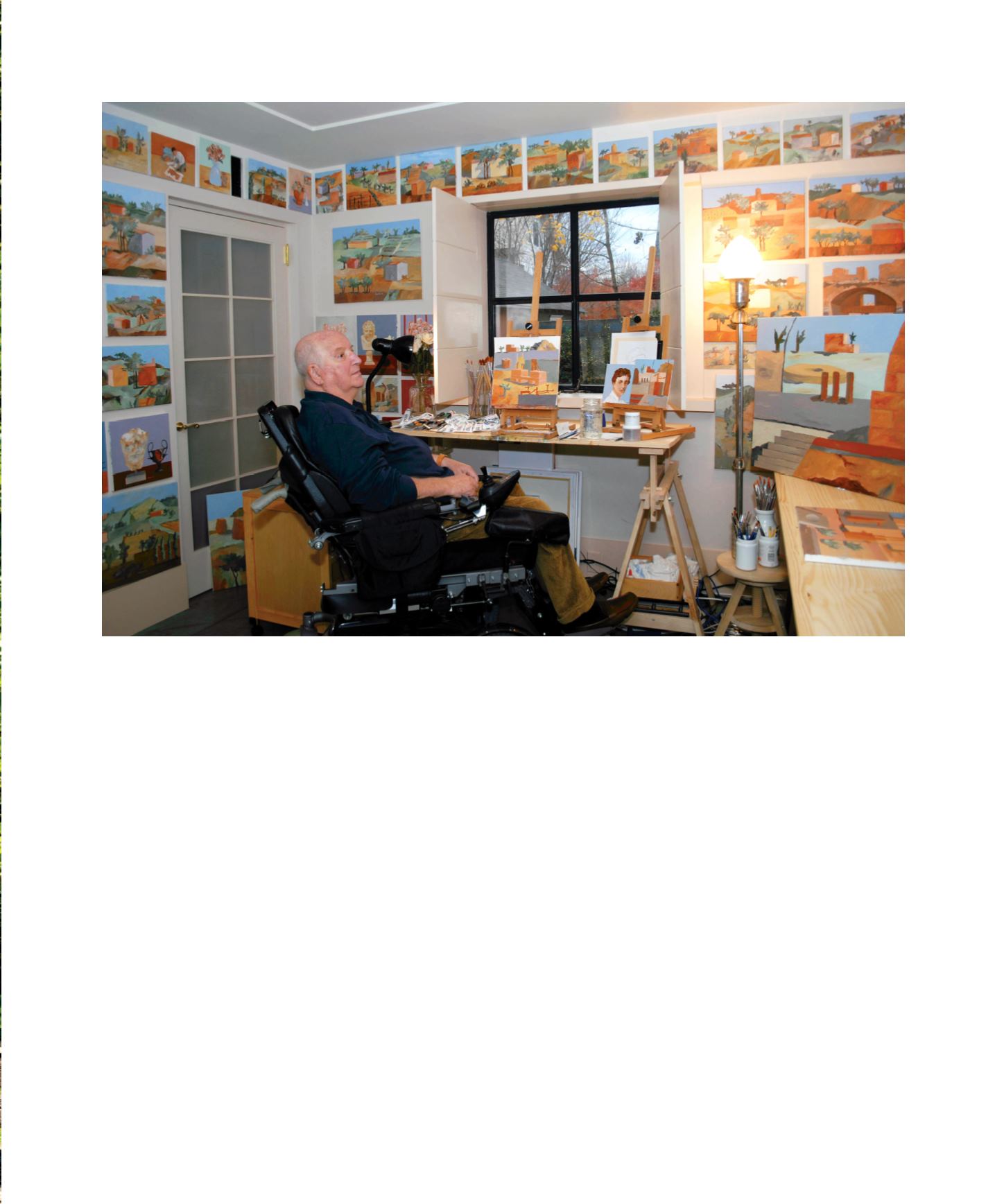
“Coming home to this house is heaven to me,” renowned architect and
professor Michael Graves once said, seated inside the very home he was
referencing — a 7000-square-former storage facility he had nicknamed
“The Warehouse,” which was tucked away at the end of a gravel driveway,
just off of a small alley road, in Princeton, New Jersey; the town where
Graves had practiced and taught for more than fifty years.
Graves stumbled onto the home in 1972, when it was nothing more than
an empty two-story terracotta structure with a distinctly Italian feel -- it
had, in fact, been constructed by Italian masons back in the 1920s, when
Princeton University hired the brick workers from overseas to come and
build their neo-gothic stone dormitories. He was smitten, and quickly
bought the building for $30,000. “It seemed like a ruin,” he said, “and there
were no ruins in Princeton.” The architect would spend the rest of his
life renovating, furnishing, and redesigning his home, and would never
entirely finish the project.
“It was completely Michael’s aesthetics,” says David Mohney, a former
student of Graves at Princeton, and now the dean of Kean University’s
Michael Graves College of Architecture and Design. “Michael arranged a
series of discreet rooms that were beautifully proportioned and detailed.
There are really wonderful pieces of furniture, many of which he designed.
And beautiful art and artifacts. It was a real total work of art, designed at
every scale. The house also represented the architectural ideas he cared
about, and in that way it became kind of a living museum house for him.”
Michael Graves died in The Warehouse on a late winter day in March
of 2015. In his will, he expressed his wish that the home be preserved
and adapted for educational purposes. This summer, Kean announced
an agreement to fulfill that wish, purchasing The Warehouse and two
adjacent structures for a nominal price of $20. The University is now
finalizing an agreement to obtain the extensive collection of furniture,
objects, and art that filled the house.
“It was Michael’s intention to keep the house and the artifacts together,”
Dean Mohney said. “That was his goal. It would be good to be respectful
of that at the very least, and then to be able to use those objects as
resources for our program makes a lot of sense to me.”
According to the Dean, the Graves house will host many public events
such as talks, symposia, banquets, and salons under Kean’s auspices,
involving leading professionals and teachers for our students, faculty, and
friends of the university. Even the garden can be used, in the same way
that Graves once did, for hosting various events and special occasions,
“There’s not really a big space in the house, Dean Mohney says, “so the
scale will stay fairly small, which I think is better in a way.”
Dean Mohney is hopeful of finding a responsive audience in town for
the wide variety of educational opportunities the home will provide.
“We hope the Princeton community will engage with us, as well as the
students at the university. It’s intended to serve a broad audience.”
KEANmag
35


